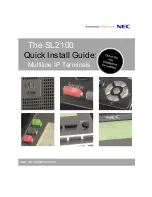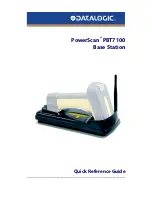
Programming for the RF Terminal
The three levels of programming support offered for the RF Terminal are:
•
Low Level ASCII sequences sent to and from the Base Station by the user program reading/writing to the
serial port.
•
Active X drop-in components. Every necessary function is defined. You just complete the code for each
function.
•
TCP/IP Active X drop-in components used by the “Server” computer to communicate with the “Client”
computer that has the Base Station(s) attached.
Low-Level Direct To Serial Port Programming
Planning
Remember, plan for every error that the Base Station might return including:
Sequence Errors detected
Illegal Command detected
Base Station Initialization detected
Addressing a Terminal Not Signed In detected
Command without an ID
Programs can be written in any language that has access to the serial port (reading/writing), regardless of the
platform. No more than one Base Station is allowed for each serial port.
Host to Terminal Programming
The basic format of a message that is transmitted from Host to Base to Terminal is fairly simple:
Byte position
Function
Possible values
1
RF Terminal ID
0-9, A-Z, a-z, - =
2+
Command(s)
**
Last
Termination of message
EOT (ASCII 4)
The
RF Terminal ID
is always the first byte and always only 1 character in length. There are 64 different
possible values - 0-9 , A-Z, a-z, - and =.
The
Command
(s) section of the message always starts with the second byte and can consist of one or more
commands - including data to be displayed or voice messages to be broadcast.
The last byte is always ASCII 4 (
EOT
) to terminate the message.
Содержание 7000 Series
Страница 1: ......
Страница 99: ... Data with check digit is 943457823 ...
















































